MEET JOHN WRINGE, AUSSIE HORSEMAN AND ‘TOP BLOKE.‘
NOTE: Please feel free to leave a comment, if you’re so inclined. To find the comments section, scroll to the bottom of this page…Thanks— JS
I’ve lived in the American West most of my life, and have always been a “cowboy wannabe.” The will was always there, but somehow the opportunity never presented itself. Still a cowboy was a cowboy and eventually became an iconic symbol of America and the spirit of the individual.
I had never given much thought to the idea of ‘cowboys’ riding their own ranges, far beyond our borders. I had long assumed that nothing is more “USA” than the American Cowboy. But it’s not completely true.
In fact, the American cowboy is a derivative of the vaqueros who herded cattle in Spain and later, in South America. Recently, doing research for this story, I learned that as late as the 1850s in the United States, white men were referred to as ‘cowhands.’ Only those men who were African-American were known as ‘cowboys.’ Blacks were still ‘boys’ to their most bigoted white counterparts, though within a couple of decades, that distinction was mostly lost to history. I’d like to think it was because the skill levels displayed by these ‘boys’ was impressive to most of their more racist peers.
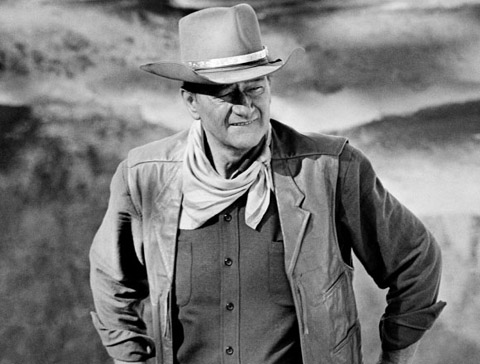
From the 1870s and 1880s, the myth of the lanky, laconic cowboy firmly established itself in the American psyche and in the social order. Thanks to the inspired performances of John Wayne, Henry Fonda, Clint Eastwood, Jimmy Stewart, and Gabby Hayes, I have often tried but failed miserably to emulate them. I’m just not laconic enough. I’ve tried to limit my responses to difficult questions with a simple, pithy, “Yup,” or “Nope.” Instead, I blather on….
It has also been a sore point with me that cowboys are required to be tall. I never came close to crossing the six foot minimum standard. I held out some hope when I learned that Alan Ladd (‘SHANE! Come back!”) was only 5 feet 7 inches. But when I learned that he was required to walk in a trench whenever his co-star was taller than him, I gave up.
GOING BEYOND THE BLACK STUMP
Aussies have a different word for everything. Anywhere remote or isolated is “beyond the black stump,” or far out in the “back blocks.” Or something similarly descriptive but distilled. And while the American Cowboy might be revered around the world (Even the USSR’s Premier Breshnev was a fan of Chuck Connors as “The Rifleman.”), it’s our cowboys that are imitated, not some foreign buckaroo. When I was an Arches ranger, I often saw male German tourists, walking the campground clothed only in their tiny neon bikini briefs, but wearing a shiny new 5X beaver felt Stetson, and rhinestone embedded pointy-toed alligator skin boots. I knew the real cowboy culture was safe at home. You gotta be an “Amurkin to say you’re the ‘real deal.’
And then I found out I was wrong…
The toughest, most decent ‘cowboy’ I ever met hasn’t been ‘lanky’ since he was eighteen. He barely reaches 5 foot six inches, and could not, in anyone’s wildest dreams, be regarded as laconic. In fact, it was because of his gift for gab that 25 years later, he still comes closer than anyone to being like a brother to me. Though he is 10,000 miles away, in the southwest corner of Australia, we are kindred spirits. In fact, he just called this morning and we had, according to Aussie custom, another great “chin wag.” Nobody wags better. (And he doesn’t say, ‘Giddy up.” he shouts “Oi!!!”)
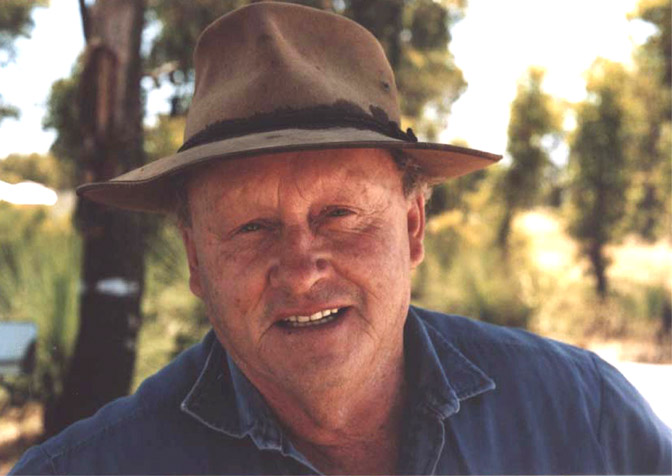
His name is John Wringe and we met at a roadhouse 200 miles north of Perth, while both of us were traveling south, by bus — me to catch a train, the Indian Pacific, back to Sydney and the long flight home to the USA. John had been visiting his son-in-law and was now returning to his home, 150 miles south of Western Australia’s (WA) capital.
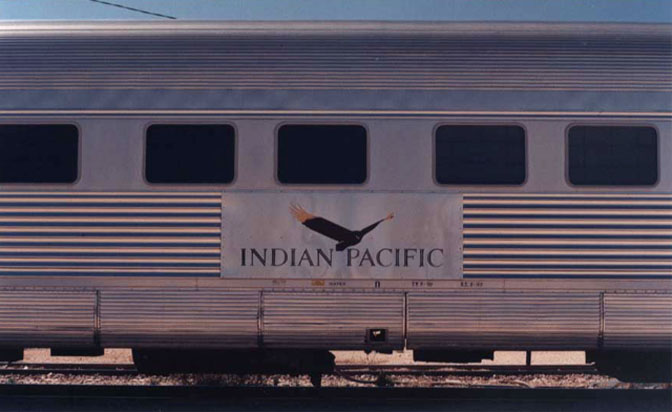
We were seated a few rows from each other, when we left Geraldton, and had we not stopped for a bite to eat, we may have never met. Isn’t that the way Life is? A series of accidents really…little moments in Time that could have gone differently. But for once I was lucky. I have never been the gregarious type and after buying a Coke, I looked for a table to sit down at. I assumed I’d be sitting alone.
Just then a voice over my shoulder said, “Hey mate. You can sit here with me.” I turned and there was John. He had the kind of face that invites strangers to accept his invitation. We introduced ourselves, I found a chair, sipped my Coke, and for the next 30 minutes, we asked each other about our recent travels, my impressions of Australia, his impressions of my impressions, and some of the details about my life in the States. When the bus driver called for us to re-board, John and I found an open row to sit and the conversation continued for another two hours. I have no recollection of the scenery during that time. I don’t think either of us ever glanced out the window.
When we arrived at the East Perth station, John and I exchanged contact information and said our goodbyes. But then I heard him say, “Oh what the hell.” We wound up at a pub on William Street, just adjacent to the Royal Hotel where I was staying for the next couple days. John told me that he and his family owned a cattle farm south of Perth, and he gave me a brief description of the land and its history. Listening to John Wringe describe his home and family, I realized how much more than just ‘home’ that it meant to him. They called the family spread “Castledene,” and I would learn much more in the years to come. I vowed to return to Australia, to visit his home down south, and he promised to stay in touch. We ended up doing far more than that…
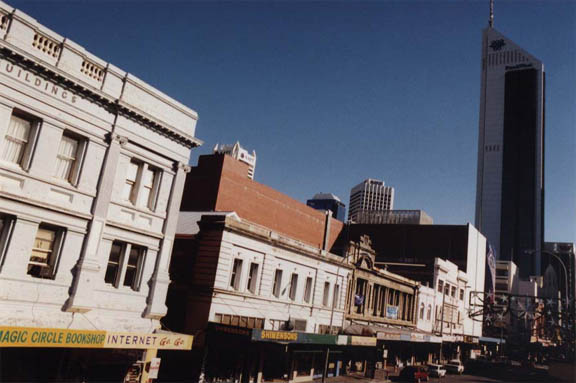
“My Heroes Have Always Been Cowboys.”
After the Civil War ended in April 1865, much of the country, especially in the South, was torn to pieces by years of conflict. But from Maine to Georgia, young men moved west in search of work. The demand for beef grew dramatically after the war, and the cattle industry grew exponentially in the decade to come. Ranchers hired hundreds of cowboys to move their massive herds of cattle from South Texas to the recently completed Union Pacific railroad. At its peak, Dodge City, Kansas was moving as many as 500,000 head a day.
But while the young cowboy in America may have sought a better or freer lifestyle in the West, other horsemen in other countries could only dream of such a luxury…and Freedom.
This fateful bus ride, from Geraldton to Perth, Australia in February 1997, would never have happened had it not been for an incident that occurred 130 years earlier, and thousands of miles away. Most of us are familiar with Australia’s interesting “immigration policy” in the 19th Century. The Land Down Under, after being discovered by Britain’s Captain James Cook in the late 18 Century, became a penal colony for most of England’s “petty criminals,” though the government often imposed the law to clear the cities of their homeless and unemployed. Still a new life on an island continent, ten thousand miles from home, had to provide some hope to those who made the voyage, instead of wasting away in a London jail.
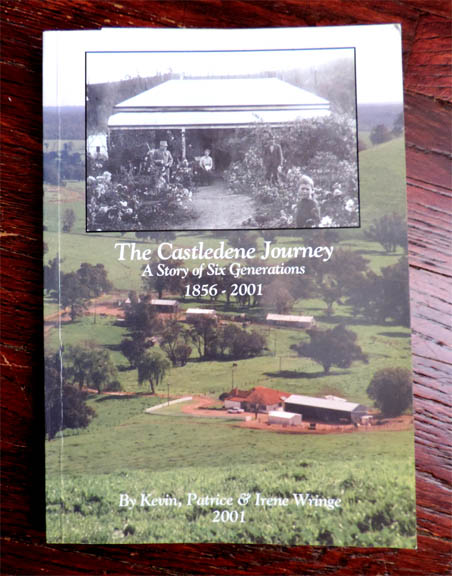
According to the official family history::
“On 17 September 1849, at the age of 18, Thomas Castle was convicted in the Old Bailey, London, for stealing a pair of leather boots, a charge that he vehemently denied…On 17 September 1853 the ship Pyrenees sailed from England for Fremantle, the port of the Swan River Colony, where it arrived 87 days later on 1 May 1853 (The colony was located on the far southwest corner of the Australian continent.). Among them was a man by the name of Thomas Henry Castle.
“Three years later, at Busselton in the Swan River Colony, Thomas would marry a young Irish woman named Mary McConnell. Together they would make the long trek to Upper Capel near Kirup in 1862 and there take up farming land previously not settled. This land was to be named Castledene — ‘home of the Castles.’ Today members of the fourth, fifth and sixth family generations reside at Castledene.”
Mary had come from Ireland in 1853 and married Thomas in 1856. Though wrongly convicted as a shoe thief, Castle earned a “ticket of leave,” for good conduct, almost on the day he arrived. He was able to start life with a clean slate and Thomas Castle was determined to succeed in this new sunburnt country.
The couple began to build a life together, working briefly in the Busselton area, until 1862, when they had the resources to begin a search for their own land. About 60 miles inland from the Indian Ocean coast, the Castles found fertile land and a good water hole along the Capel River. They would call their home and their land “Castledene.” (Home of the Castles). They would stay there for the next 42 years, until their deaths in 1904— they died within five weeks of each other.
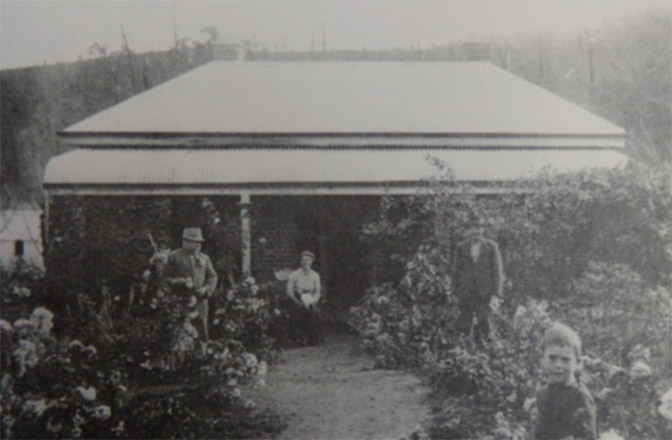
Their children carried on, through hard times and good. John’s father, Wally Wringe, was born at Castledene, in the same year that Thomas and Mary died. Eventually Wally would form a partnership with his brother, and manage Castledene for almost 30 years. As his health declined, Wally passed the land along to his sons, John and his brother Michael. Wally died at 70, in 1974, after 70 years of unflinching loyalty to his family, to Castledene, and to the community he had embraced and served, so many years before.
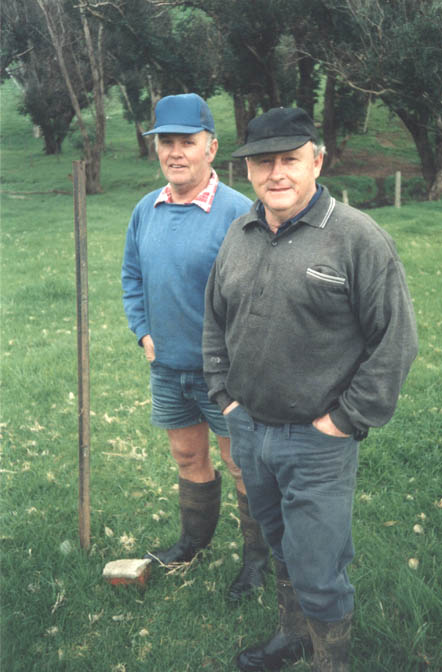
A CHANGING OF THE GUARD
When John and Michael took over the farm from their father in 1961, Castledene was no longer as productive as it had once been, and the two sons and their father, spent long hours and long days…and long years…upgrading their farm, increasing their cattle herd, establishing a dairy farm, and introducing as many as a thousand sheep. Many other upgrades were made to the infrastructure. And no matter how rough Life became, through two world wars, a global economic depression, and the 1914 fire that burned every acre of Castledene, the Family carried on, always finding a way to go one more day. There’s an Aussie expression that encapsulates that spirit. Or at least did. When I first made my way to Australia, I was introduced to an optimistic spirit that once defined the heart and soul of Australia itself..
Whenever hardships were faced that seemed overwhelming, or challenges too daunting to succeed, you’d hear an Aussie offer his or her best advice. They’d say:
“Ahh Mate…Give it a GO!…What have you got to lose?” It was precisely this state of mind that steered so many Aussies through so many hard times. “She’ll be ‘right!”
The family spent years trying to expand their pastures and worked ‘can’t see to can’t see,’ cutting Bracken fern and ringbarking some of the older gum trees. Eventually they cleared a thousand acres for pasture land, and their land holdings would grow to 2500 acres. Eventually, upon their father’s death, the two brothers amicably ended their partnership and proceeded to run the two spreads as separate businesses — Michael ran cattle and the dairy farm. John cared for the cattle and sheep. And often they shared responsibilities or equipment. It was till, in so many ways, a family effort.
Both Wringe brothers married in the late 1960s, raised families and built their own homes, across from each other on Upper Capel Road. It was to this family history, and to the wonderful Wringe Family when I accidentally arrived on the scene…
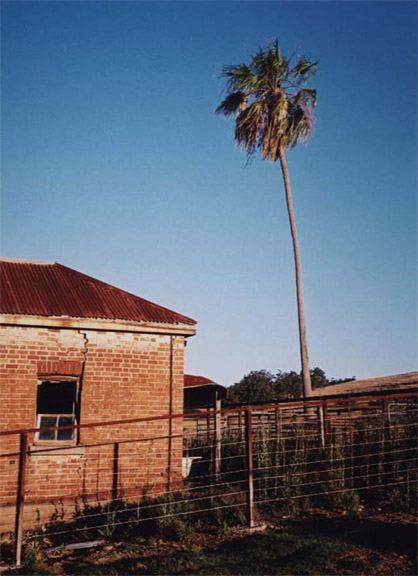
*****
During those long months after my first return from Australia, and meeting John, I did little but anticipate the next trip. I planned to fly back to Western Australia in late December; John and I spoke often by phone and fax. My plan was to spend all of this latest trek exploring the far west end of the continent; John suggested that he look for a used car for me to buy and use when I arrived. Later, John called again and told me he’d “found the perfect ute.” It was a yellow 1981 Datsun 2WD ute (pickup truck in the USA). I told John to buy it if he thought it was a good deal. John replied, “Lucky thing, mate. Because I already bought it.”
(It became known as the Yellow Submarine. In the next decade, I’d put more than 100,000 kms on the yellow ute.)
But John’s wife and kids were worried. John barely knew me. “How do you know he’ll send you the money?” they asked. Back home I went to my bank and wired John the money. My friends said, “How do you know he really bought the car? How do you know he’s not stealing your money?”
At the appropriate moment and to the concerned individuals in America and Australia, John and I just smiled. Sometimes…you KNOW it’s going to be okay. It was,
I landed in Sydney, took a connecting flight to Perth on Ansett Airlines. Caught a cab to the same Royal Hotel in downtown Perth, where I had shared a few more beers with John just eight months earlier. The Royal was across Wellington Street from the rail and bus station. The next morning, I lugged my heavy gear across the busy crosswalks to the station and bought a ticket south. Two hours later, after a beautiful coach ride through some of the loveliest most serene country I had ever seen. I arrived in Bunbury and saw the yellow ute. In fact, I spotted it before I saw John Wringe’s smiling face.
“Welcome back!” John said. It felt like home.
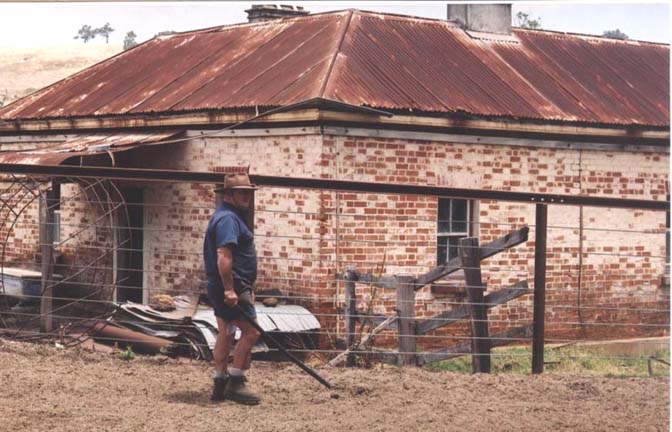
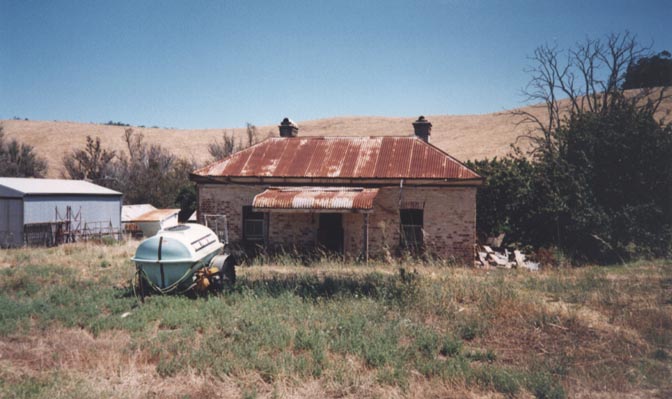
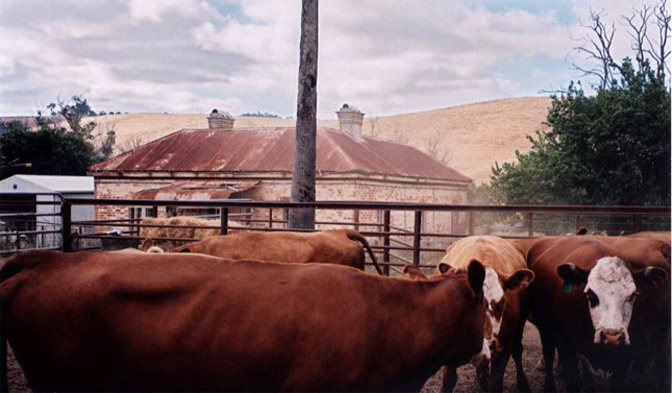
We made the 50 kilometer drive to Kirup, and then down a long 5 km canopy of gum trees until the landscape opened up to grassy brown hills and ridges along the Capel River and stands of eucalyptus. It seemed like the entire Wringe Family was there to meet me, and I quickly assimilated. It was just past Christmas and many of the children, other nearby family members and a long line of friends stopped by to visit the Wringes and to check out the stranger who “talked like a Yank.”
Castledene bore little resemblance to the primitive outback homestead it had once been. Commercial electricity, television — most of the luxuries that were common in the cities had even made their way to the country. Though in some ways it was a mix of modern and pioneer life. The hot water heater, in 1997 at least, was wood-fired. John or James often had to go outside in the chill morning air, and split some jarrah wood to provide a warm shower. It would be a few more years before Jean insisted that John upgrade!
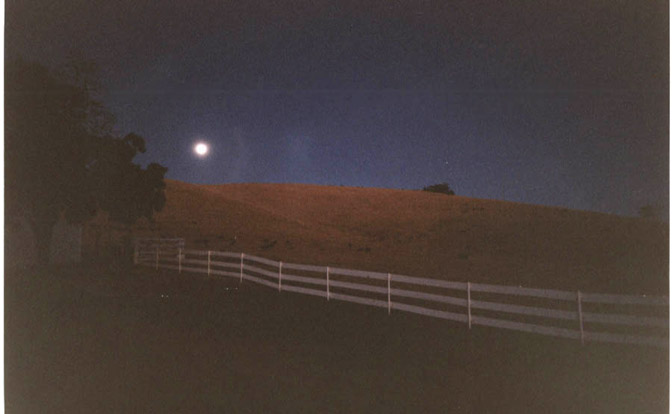
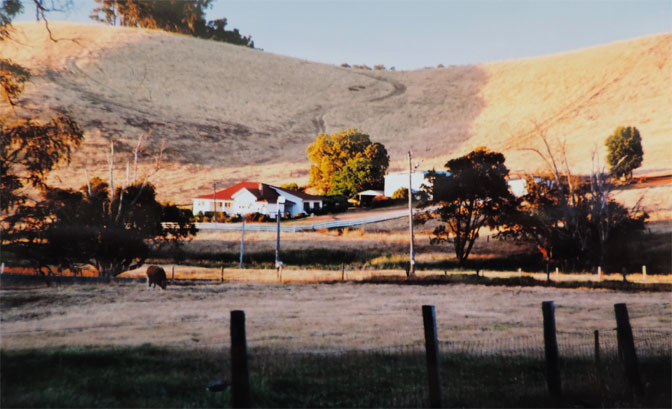
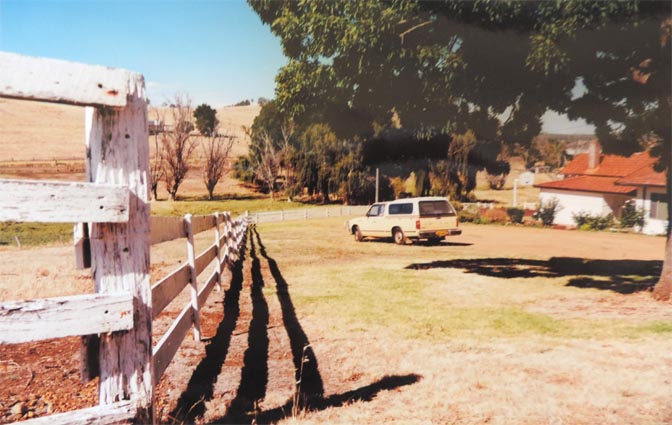
THE LIFE OF A HORSEMAN
I soon came to realize how long Castledene had been a part of the family and how large Castledene was. At almost 2500 acres, I assumed that John and Michael, and those who came before them, had relied on horses to manage their cattle and sheep. And for decades John had prided himself on his horsemanship.
Now John and most of his fellow landowners in Upper Capel relied on backcountry motorcycles to traverse the steep hills and ridges and through the crossings. I told John I had once traveled by Yamaha 350 across the United States, but explained that I had not been on a bike in years. But this was where John’s optimism shone through, like many Aussies. John assumed my motorcycle skills “would all come back to me,” and he handed me the key to a spare dirt bike. “You’ll be ‘right, Jim….Let’s go!”
But as we made the steep slow climb to the ridgeline behind the Wringe homestead, he told me about a happy horseback moment. It had been almost 25 years to the day, on Sunday, December 29, 1964, that the community was alerted to the disappearance of a little two year old blonde girl, Trudy Parker.
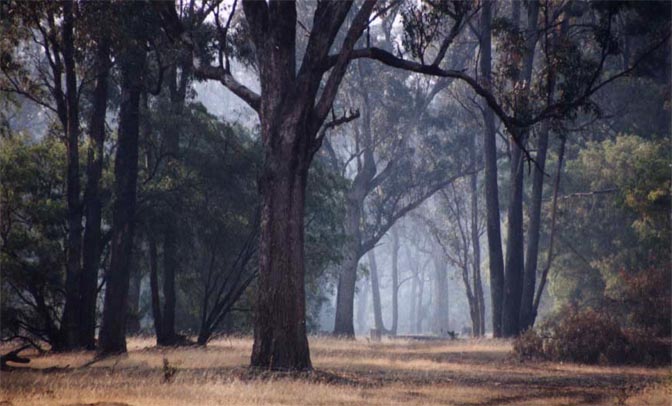
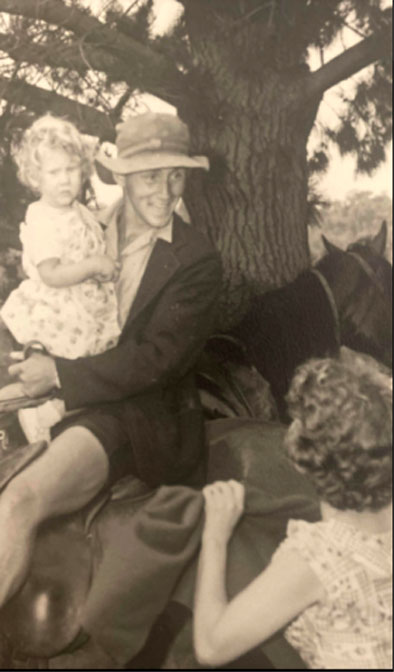
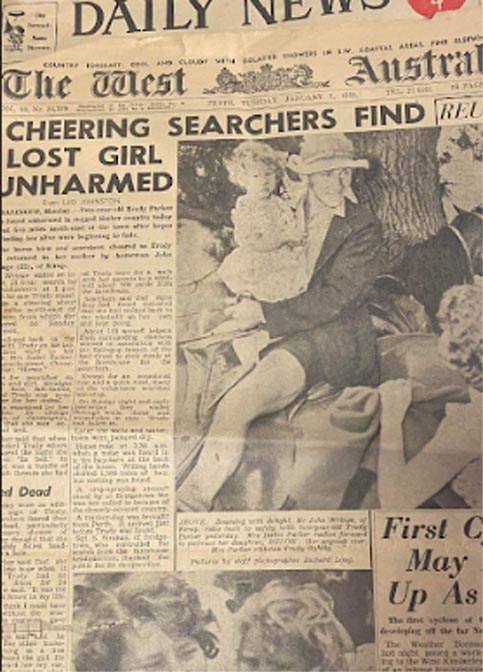
She had disappeared from a family holiday outing near Balingup, but a quick search had turned up nothing. As Sunday evening gave way to the night, Trudy’s family feared the worst. There was still no sign of her the next morning. To further their concern, heavy rains had fallen the previous night, the streams were running, and plans were made to start dredging the nearby stock ponds. Her mother later said it was the rain that made her give up hope.
But out of nowhere, on Monday afternoon, Mrs. Parker and her friends and all the community members who had gathered to support her, saw John Wringe riding toward them with a big grin etched across his face. It was one of those perfect moments. And incredibly the local newspaper photographer from Bridgetown was there with his camera to catch the reunion.
Does it get any better than that photograph?
BACK TO THE FUTURE: PUSHING COWS…HERE & THERE
Soon John had me confident enough on the Suzuki to help him move cows from one paddock (pasture) to another, though I don’t know if I was really helping. But it felt good to be a part of this. Sometimes John would have me dismount from the cycle and help direct the herd in the direction John wanted them to go. Often we’d be moving cows down the Upper Capel road from one pasture to another. I’d position myself on the main road and John would admonish me, “Make sure they turn left on the bitumen. Don’t let them turn toward you and go up the hill.”
More than once, the lead steer, the one smarter than the others, chose to challenge me. John had told me to hang tough. The big steer lowered his cement block shaped head, took one intimidating glance around, and ran right at me. Remembering John’s warning, I “hung tough’ as long as I could, but the steer was determined to flatten me and finally, I gave way.
John sighed a sigh of relief. “I’m glad you ignored my advice,” he said. “That steer was going to bury you.”
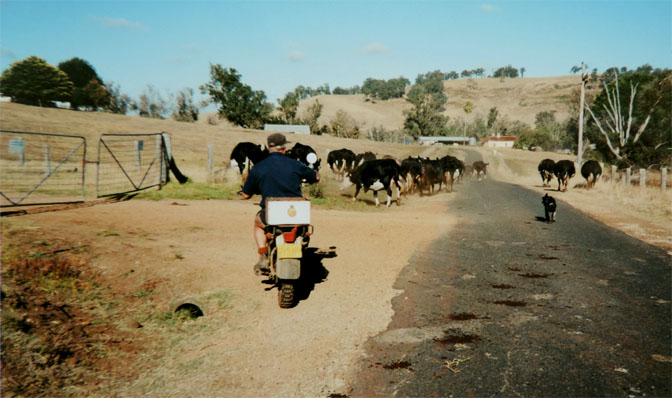
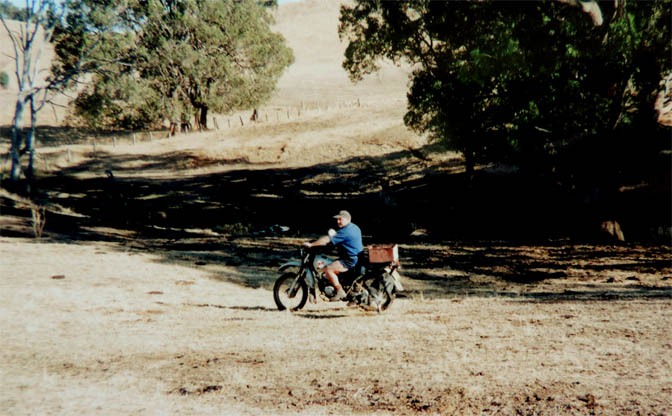
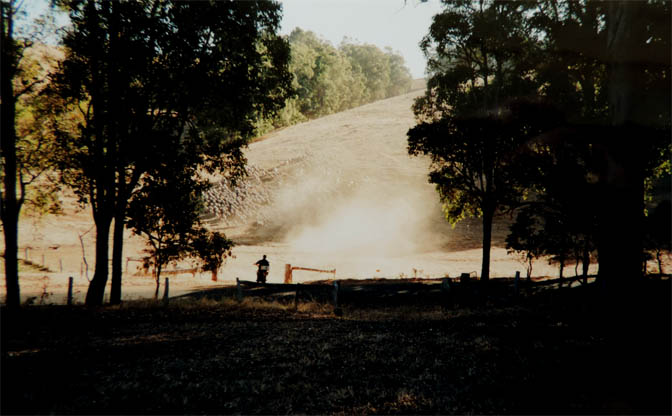
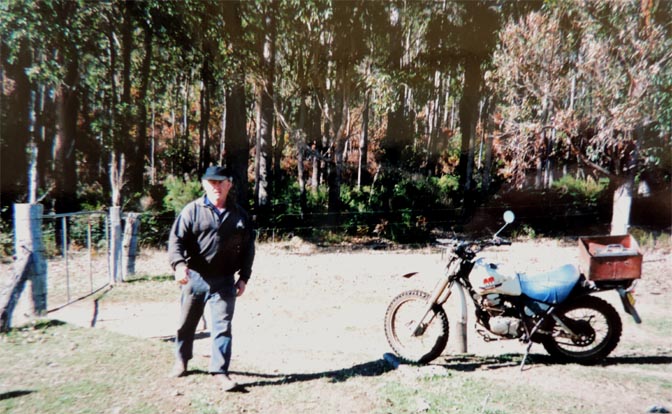
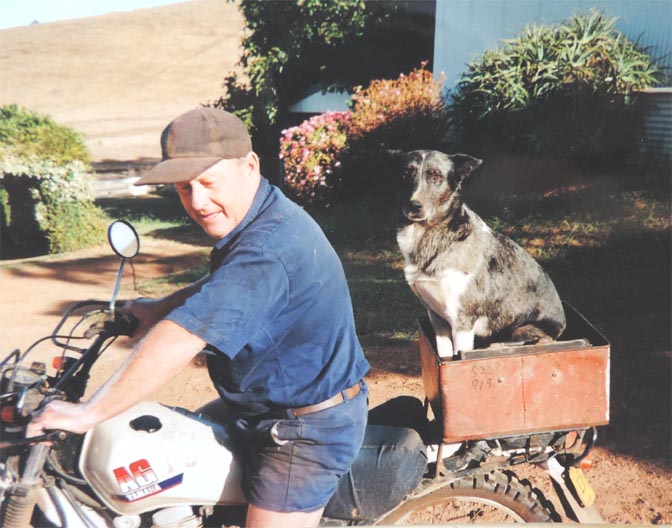
So…this was Kip. The Castledene dog during many of my visits in the late 90s and early 2000s. The thing was, Kip had no use for being a herd dog and he rarely helped shift sheep or cattle. Kip could often be found stretched out on his back in the driveway, his hind legs fully extended. One could think he was dead, but Kip just enjoyed a good sleep. But he also liked and demanded his personal space. The first time I sw Kip, he was sitting on the rear of John’s bike, as he is here. I started to walk up and give Kip a pat. but John yelled out, “NO! Don’t touch him!!” It seems John’s brother-in-law peter once made the same mistake. When he entered Kip’s “comfort zone,” he just about took Peter’s lip off…large quantities of blood. Several stitches. A lesson learned.
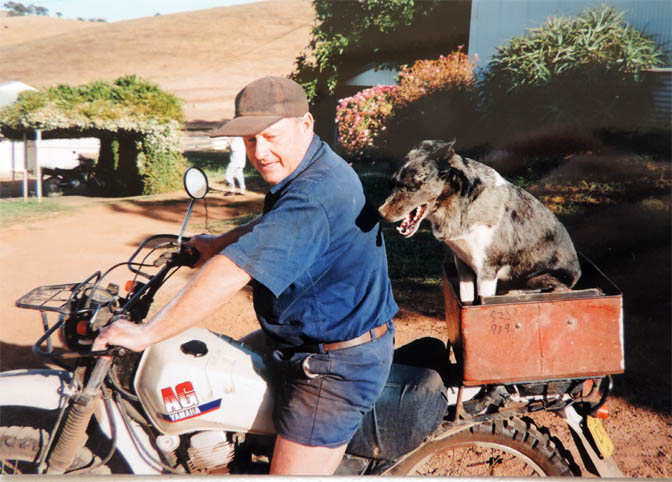
Over the weeks and even years, as I returned again and again, I became more proficient at moving John’s cows while motorcycle herding them. I learned to take it slow, avoid sudden accelerations, except when needed. The cattle slowly became used to me and seemed willing to help me out with their limited cooperation. But occasionally one of them would get a wild hair and take off. Some days they frustrated John to the point where I feared these ungulates were taking years off my buddy’s life,
*****
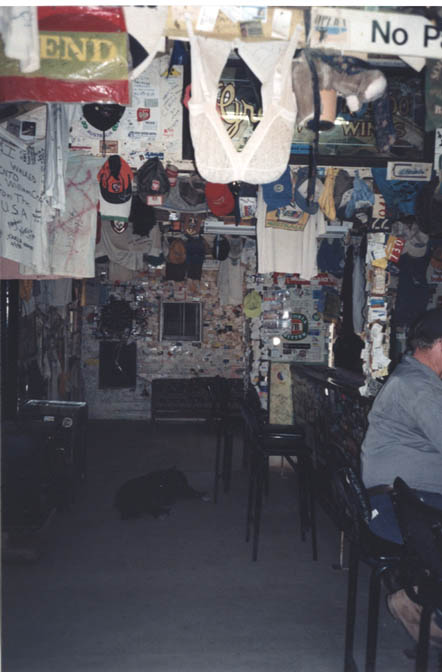
Though Casteledene was about as big as a ranch, or farm, or station one would find in the Western Australia southwest, the massive “ranches,” or stations were usually located inland. In fact, I had visited the biggest station in Australia, the William Creek Station only months before.
I knew about William Creek because I had read about it in Ed Abbey’s “Abbey’s Road.” Abbey had spent a few months in Australia in 1979, and I am still convinced that, had he lived,. Abbey would have eventually relocated to play out his final days in the last remaining wild place on Earth. Abbey had spent some time with the station manager, Dick Nunn.
Now, almost 20 years later, I walked into the William Creek Pub and asked about Dick.
Before the bartender could answer, I noticed the hundreds of women’s brasieres that were hanging from the ceiling. Yeah, I thought. Ed would love this place. I asked about Dick. In Australia, nobody gives a short straight answer. When the bloke heard the question, he smiled (sort of) looked at the bar and then chuckled. He said:
“Dick Nunn? Yes I know Dick Nunn…You want to talk with ol’ Dick? Well, you’d need a shovel and you’ll have to dig down about six feet to find Dick…And it would be a bit of a one sided conversation once you found him…Dick’s outside.”
These Aussies are all a bunch of wise guys…I found Dick’s marker and a plaque to his memory. It was just a month later that I would meet John..
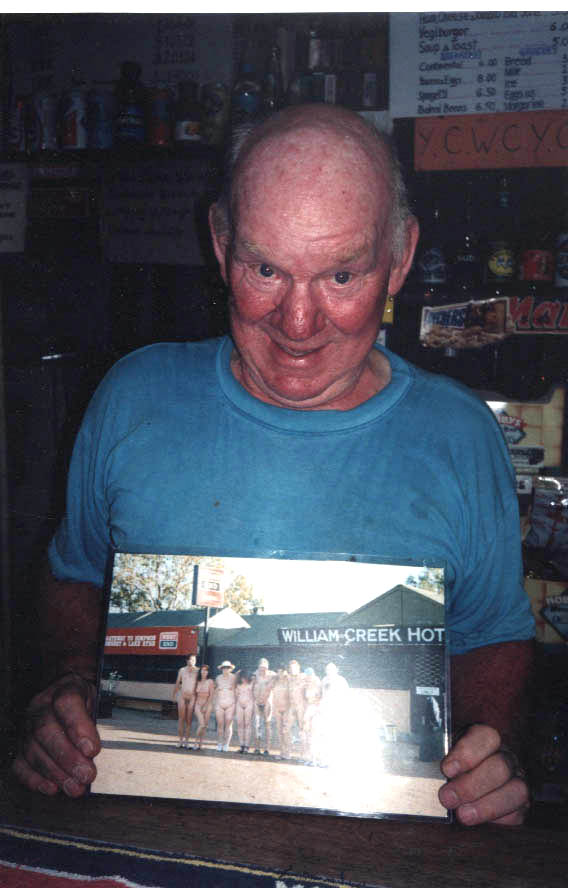
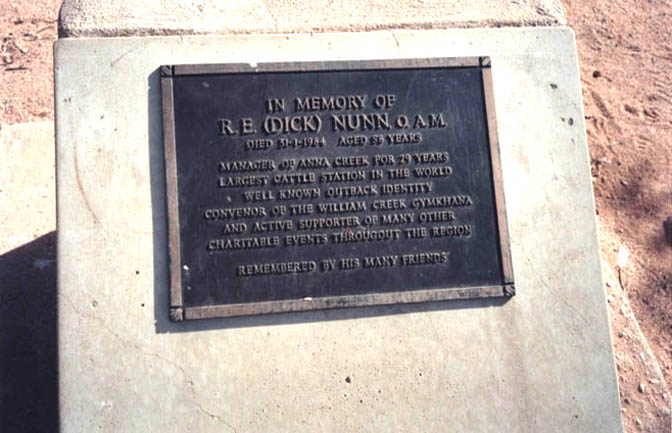
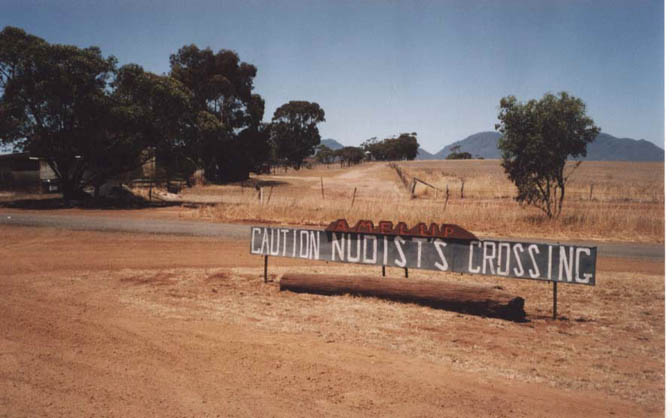
CASTLEDENE in the 21st CENTURY
Back with John and Castledene in 1997, and those first few hours at Castledene, I discovered that the bartender (or publican in Aussie-speak) in William Creek had nothing on the wit and wisdom and pithy observations of John’s dear friend and lifelong neighbor, Ted Quick. He saw through me in 30 seconds.
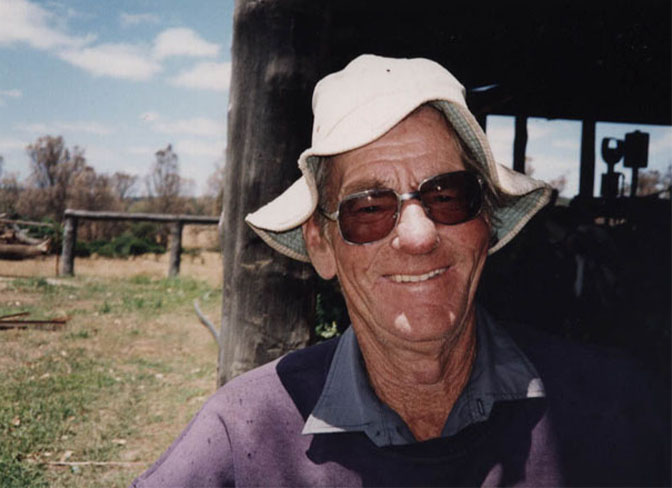
When you farm and ranch anywhere, you know that you’ll have to do everything possible to keep your land and home afloat. Second jobs are almost required. John And his pal Lui Tuia owned a shoe store in downtown Bunbury. It was perfect for John who, as I mentioned, loved to tell a good yarn. Other family members had worked over the years to keep Castledene solvent. John’s son, James, started a tomato farm when he was barely out of school, The shop and the processing/grading shed and the tomato patches themselves, were just a few klicks down the road from Castledene. James and Ted’s son Gary had formed the partnership and while the business was extremely labor intensive, the brand “Wringe-Quick” tomatoes were a common sight for almost20 years at groceries across WA.
And on this day, Ted was there to offer his assistance and expertise. John and I arrived at the lunch hour and we found Ted and the crew munching sandwiches and sipping tea. I walked up, looking slightly out of place, with a 35mm SLR camera draped around my neck and an 8mm video camera perched on my shoulder.
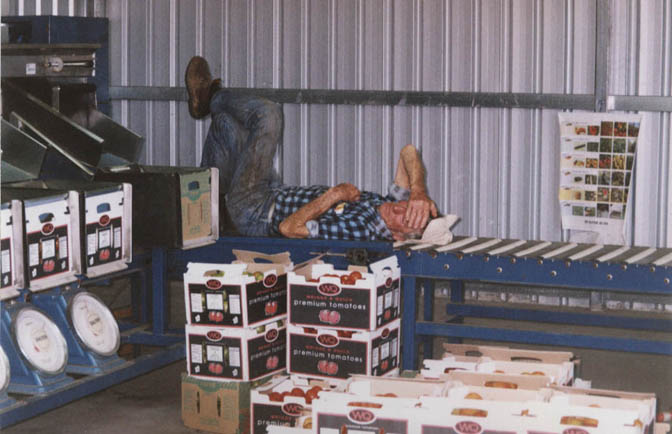
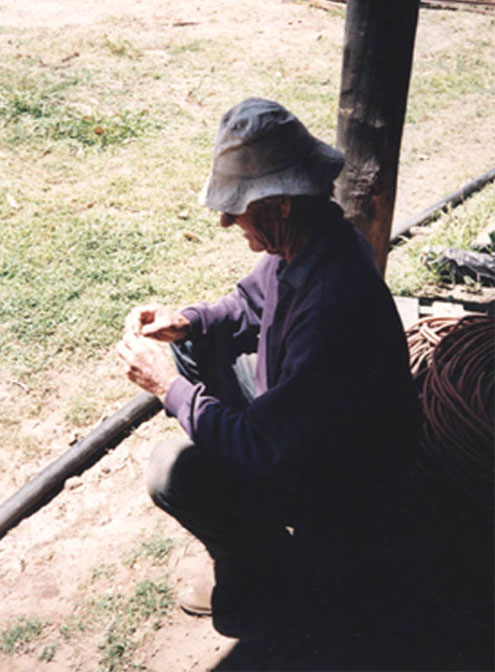
Ted glanced up at me from his prone position and scowled. “Well, “ Ted observed, “Who is this bloke with his bloody cameras hangin’ all over him? Do you think you have enough cameras or do you need some more?”
For just a moment I had taken Ted seriously but then I noticed John bent over in convulsions and Ted continued. John raised up and gasped, “Ah Jim…Ted here is just taking the piss out of you!”
Ted continued, “Now I look at all those bloody damn cameras you’re wearing around your bloody neck, and do you know what I remember? Do you know what you remind me of? I was in New Guinea in 1942, fighting the Japanese and they just about had us down…and then…we hear we are being reinforced by the Bloody Yanks ….and when the Bloody Yanks arrived, do you know what they were wearing around their necks? No…NOT rifles or bazookas or BARs. No…they had BLOODY CAMERAS!!! I can always spot a Bloody Yank, by his bloody camera.”
Finally Ted unwound his long legs and stood up to shake my hand and say hello. He decided I wasn’t such a bad guy after all, especially if I was a friend of John’s. We gave him the 30 second version of the Wringe-Stiles encounter and he had heard snippets even before I arrived. But soon, Ted went back down again, this time to his haunches. It was time for Ted to roll another smoke. Ted could be somewhat frugal but the amount of tobacco he expended in one cigarette could not have given him much more than a hint of taste. Or a health issue. Still…Ted was approaching eighty and he liked to roll his smokes. His wonderful wife Betty tolerated his habit but she worked the line at the tomato sheds too and wouldn’t let Ted put his smokes anywhere near the tomatoes or the grader belt.
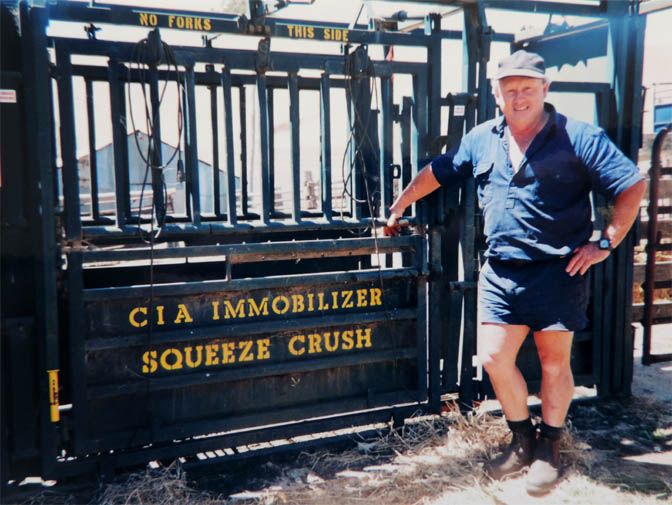
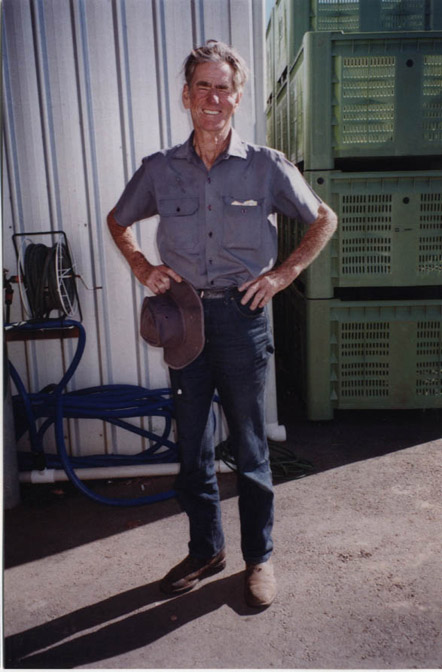
*****
Over the years I returned to Western Australia more than a dozen times. Twice I almost moved there. And over the years, I even picked up a bit of the language. I helped John when I could, moving cows from paddock to paddock, or setting beams on the new tomato shed, or fixing a bad water line…one year I ran the “CIA Immobilizer” when the local vet came out to do pregnancy tests. They ran the cow into the steel cage and it was my job to pull the lever on the front gate that would immobilize the critter’s head, until the vet could check for calves…he’d stick his arm up that cow’s rear end so far, I thought it would emerge from an ear. But the vet got his calf count.
John and James gave up on sheep just a couple years after my first visit, but I still have photos of John and me shifting them. And I just realized, as I wrote this, that ‘shifting’ was precisely the word John used to move the stock. There were other ways of expressing oneself. Spock might have called them “colorful metaphors.” But Aussie slang is poetry all its own. For example:
A young man who is growing up to be the pride of the family is someone that John would say, “He’s gone good.”
But if an Aussie wants to call out a coward, he’ll say, “Ah mate, he’s nothing but a shiver in search of a spine.”
A large family might be the result of “fecundity” to the casual observer.
I don’t know if it’s even true but some Aussies insist that the dot on the letter ‘i’ is a ‘tiddle.’
Once, on the local ABC AM radio, I heard a commenter speculate on the relative size of his nose and fingers. “Is it a coincidence,” he asked, “that my finger fits exactly into my nostril? Could this be an evolutionary event?”
Another story tells of the two drovers who came across a wounded animal. One asked, How do you know an animal is dangerous?”
His mate replied, “Poke it with a stick.”
Sometimes Aussies seem a tad less sensitive than they really are. But in fact, it’s all part of the “She’ll be ‘right” code that they strive to live by. And there were more…
I heard a friend complaining about the stingy ways of his business partner. He said, “That fellow would skin a louse for his hide.”
Or…”He’s as blind as a welder’s dog.”
Or…”He’s as ugly as a hat full of arseholes.”
Or…”He has guts for garters.”
And most Aussies, the rural Aussies that is, often cast a dark eye on their lazy friends. Some just couldn’t stand to watch idle hands. The conversation would go like this:
“What’re you doing?”
“Nuthin.’
“Who’s helping you?”
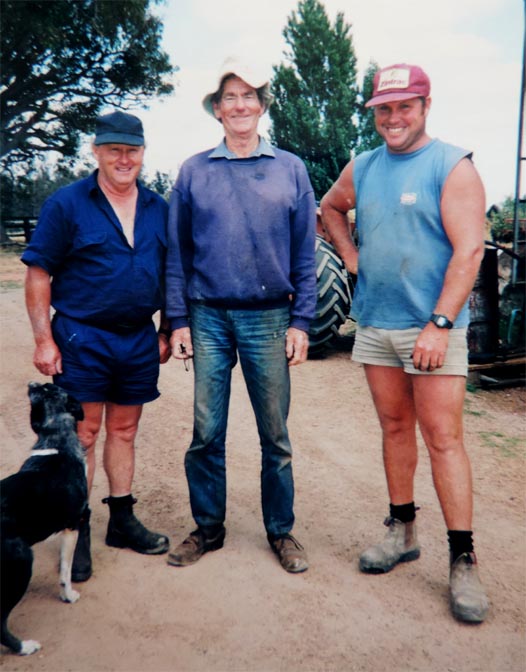
Getting into a ‘Chin Wag’ with these blokes could lead to a memorable experience.
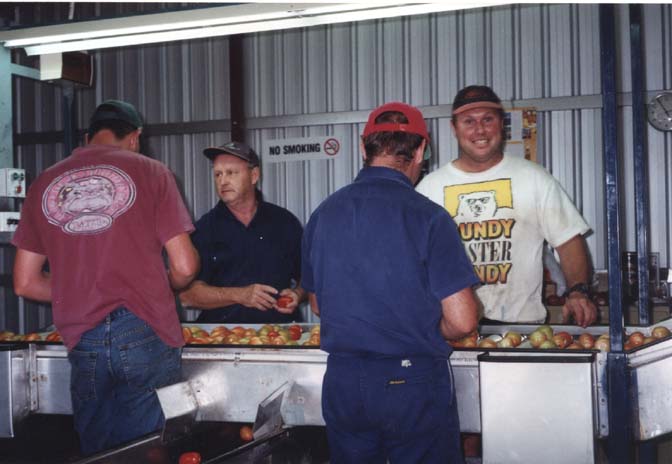
During my first visits to Australia, I thought I had found Xanadu. Australia in 1997 seemed like one of the most “live and let live” societies I’d ever found. Maybe it was too far away from America and the Real World to be influenced, or at least damaged by our less than desirable lifestyles and the never ending quest for more material wealth. Nobody cared what outfit you wore when you rode a bicycle, or went fishing. If you found yourself bragging about some recent expensive acquisition, the boastful bragger was sure to get an earful from his mates.
I recall once listening to the hourly news on ABC Radio, An American with a work permit, had been hired on at some factory, but after just a few days, the Yank had filed a formal protest with the company because he was being “verbally abused” by his Aussie workmates. The case went to trial and the judge listened to both sides. Then, wasting no time, he dismissed the complaint and told the whiny (“Whinge-ing” in Aussie-Speak) American to shut up and go back to work. Or quit. His co-workers preferred the latter. So did he.
THE PASSAGE OF TIME
By the last time I made a solo trip to Australia in 2010, the country was starting to change. American Greed was finally making its way across the Pacific. From a country whose residents really didn’t care how many real estate investments they owned, by 2010 most Aussies bragged about them. The average cost of a modest residence in Perth jumped from $135,000 at the turn of the century, to over half a million dollars now. Just like America. Land in the countryside rose accordingly. Prices exploded. “Hobby Farms’ sprouted like mushrooms. The Sunburnt Country was about to be transformed,
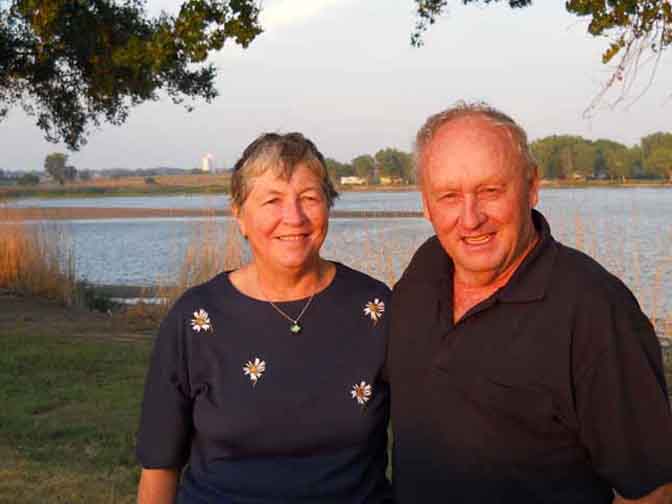
Still the bond between the Wringe Family and me could never be broken. In 2011, I was back in the States and with no plans to return. It was the first time in years I hadn’t planned my annual visit.
But my life at the time was changing, and even for the positive back then, and there was no one who I wanted standing beside me more than John Wringe. In late September 2011, John and Jean traveled all the way across the Australian continent and the Pacific Ocean and half way across this country, so that John Wringe could stand beside me at my wedding. It was an event that they had both hoped for me since the day we met, And though a decade later, it didn’t work out, I still derive some comfort from that moment, when everything came together, if only for a while.
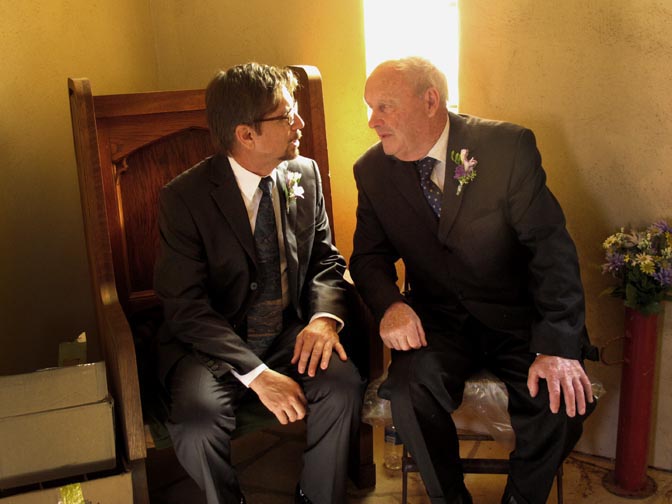
All these years later, I can still call John up and be reminded of the friendship that I’m now sure will outlive and outlast us. In Australia, there’s no higher compliment than to call a mate a “top bloke.” If anyone has earned that title, in my heart and soul at least, it’s John Wringe.
“Oi!” my friend.
NOTE: This is my introductory Australia story. I thought who better than John Wringe to be the first Aussie you meet. But there are more stories to tell, and that seems to be what I do best. So coming soon…More stories “Beyond the Black Stump.”
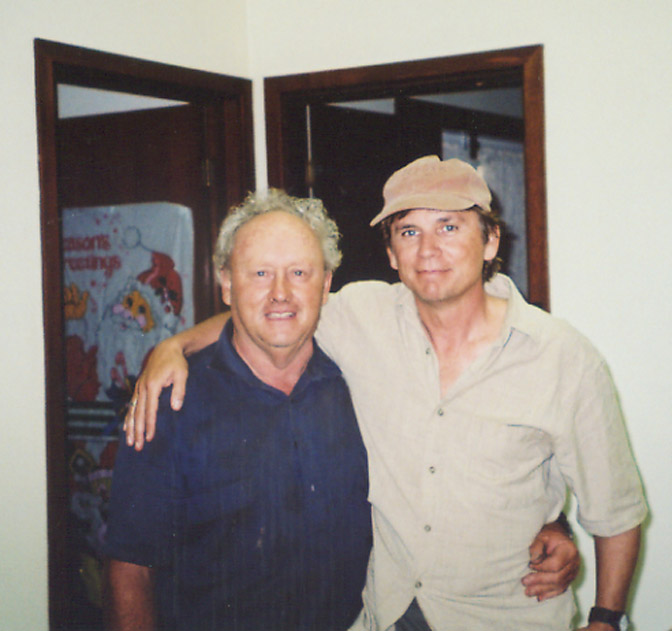
Jim Stiles is the publisher and editor of The Zephyr. Still “hopelessly clinging to the past since 1989.” Though he spent 40 years living in the canyon country of southeast Utah, Stiles now resides with two cats, Rambo & Rascal, on the Great Plains. Coldwater, Kansas is a tiny farm and ranch community, where there are no tourists.
He can be reached via facebook or by email: cczephyr@gmail.com
TO COMMENT ON THIS STORY, PLEASE SCROLL TO THE BOTTOM OF THIS PAGE

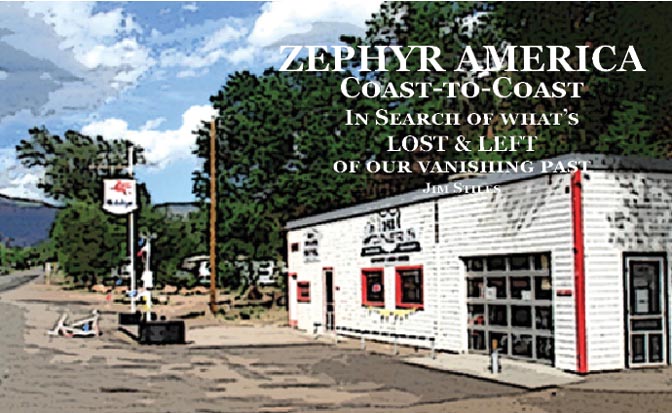
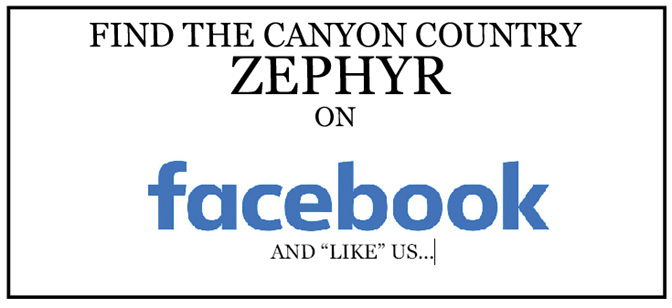
And I encourage you to “like” & “share” individual posts.
Why they can’t just leave the site alone is beyond me,
but that’s what Facebook likes to do.
ALSO NOTE: I post old photographs and stories from our 25 year old archives every day. Pictures from Herb Ringer, Edna Fridley, Charles Kreischer.. even a few old photos from my Dad. So if you want to stay caught up on our historic photo collections,
be sure to “follow” us on Facebook…Thanks…Jim
https://www.facebook.com/FansoftheCanyonCountryZephyr/
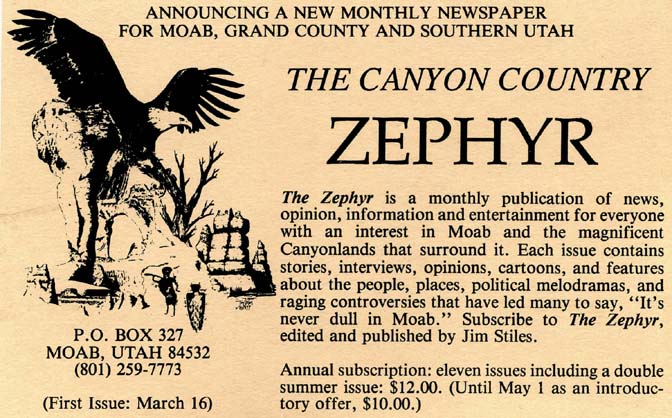
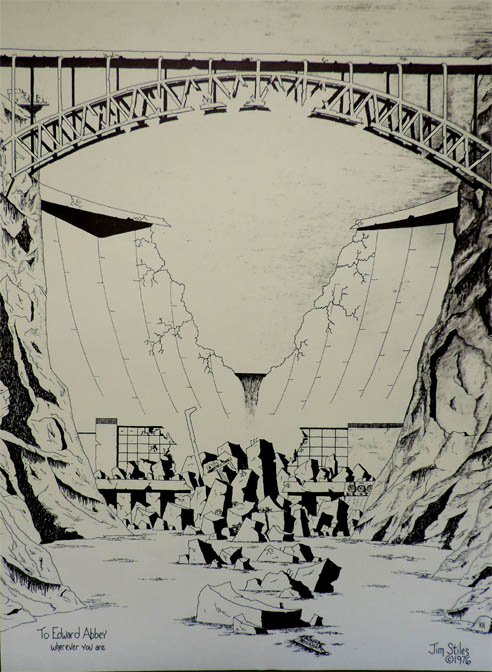
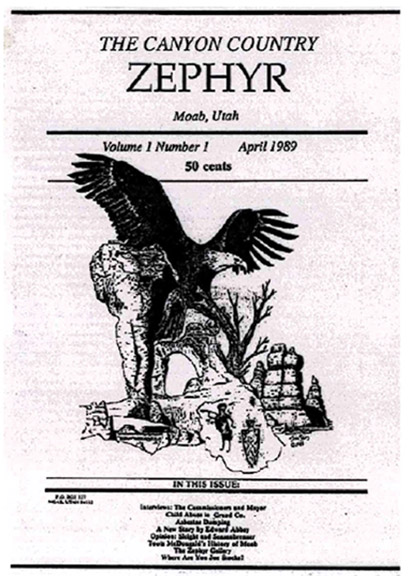
Signed copies
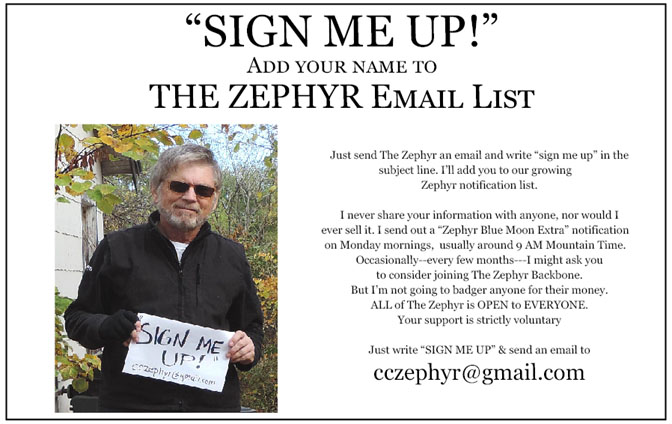
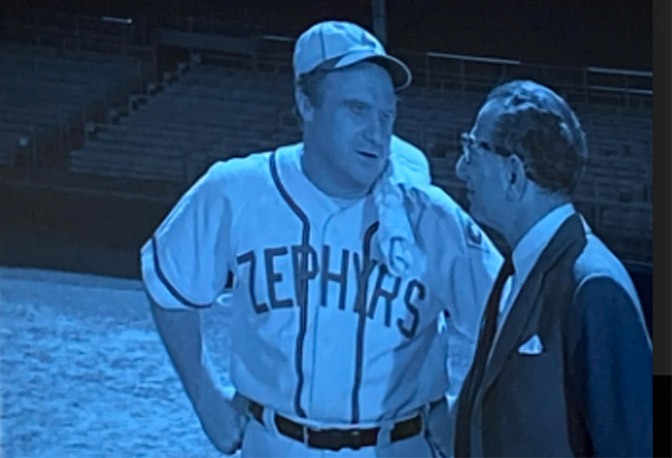
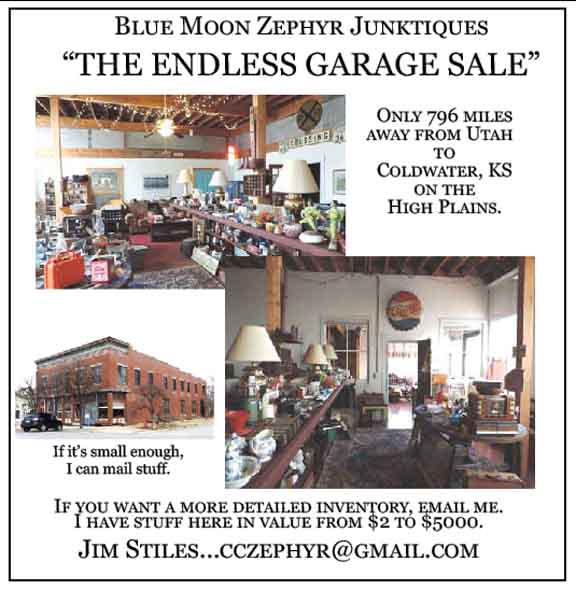
https://www.facebook.com/profile.php?id=100086441524150

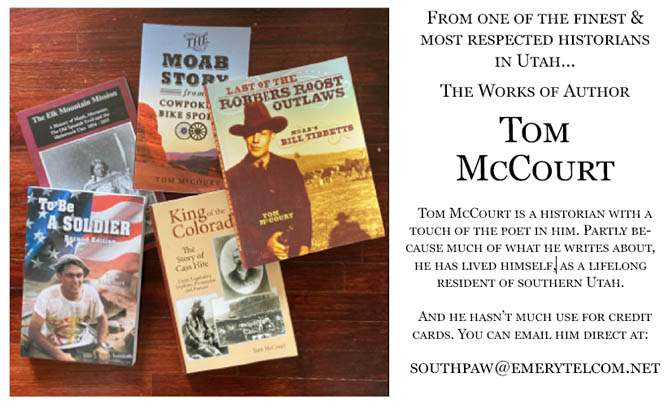
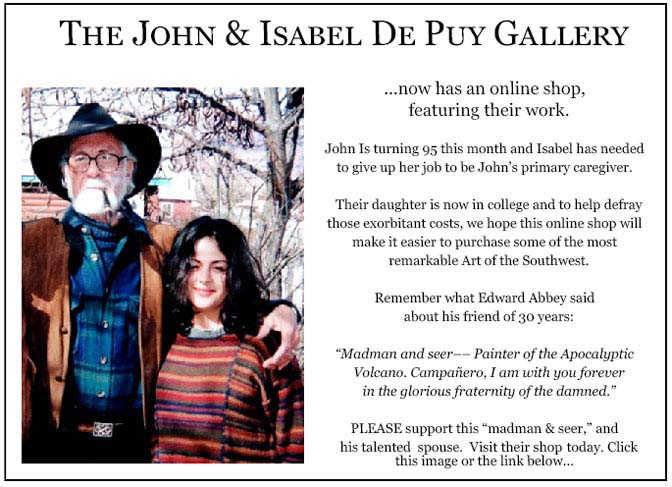
More than six years ago, The Zephyr, me & four other individuals were sued for defamation by the former Moab City Manager. Faced with mounting legal bills, my dear friends John and Isabel De Puy donated one of John’s paintings to be auctioned.
ALL the proceeds went to our defense.
Thanks to them, our bills were almost completely covered.
Now I’d like to return the favor. Check out the link below and their online shop… JS
https://www.depuygallery.com/shop.html
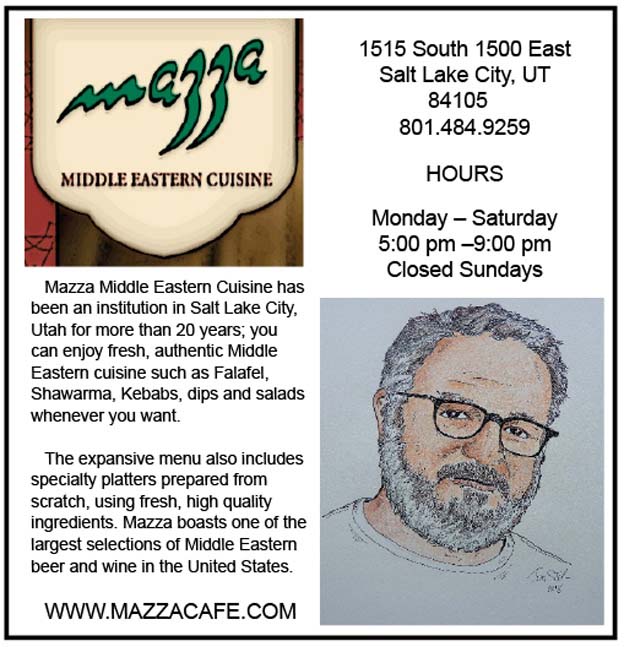
And check out this post about Mazza & our friend Ali Sabbah,
and the greatest of culinary honors:
https://www.saltlakemagazine.com/mazza-salt-lake-city/

https://www.canyoncountryzephyr.com/

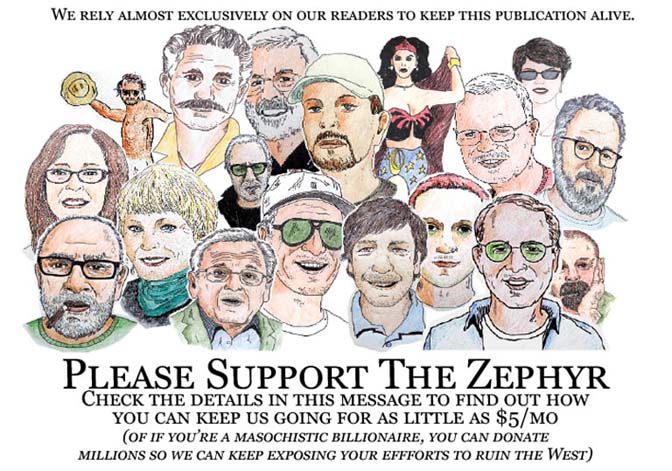
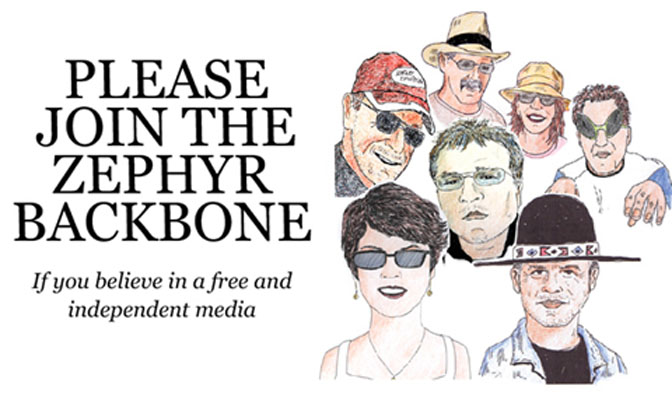
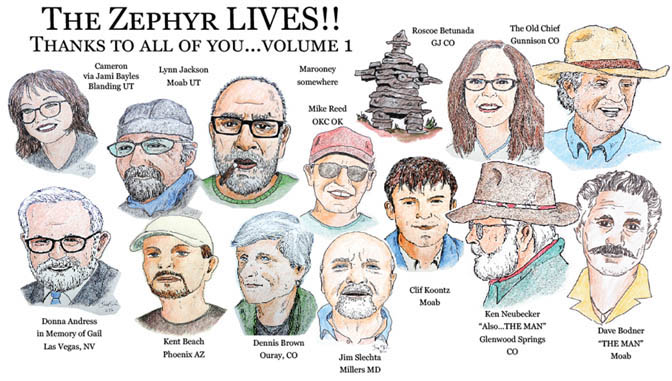
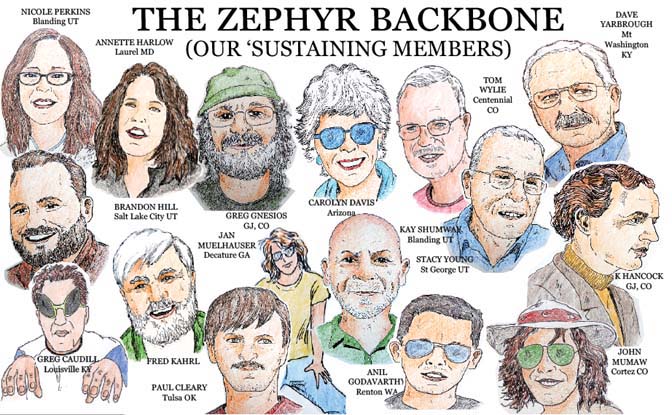
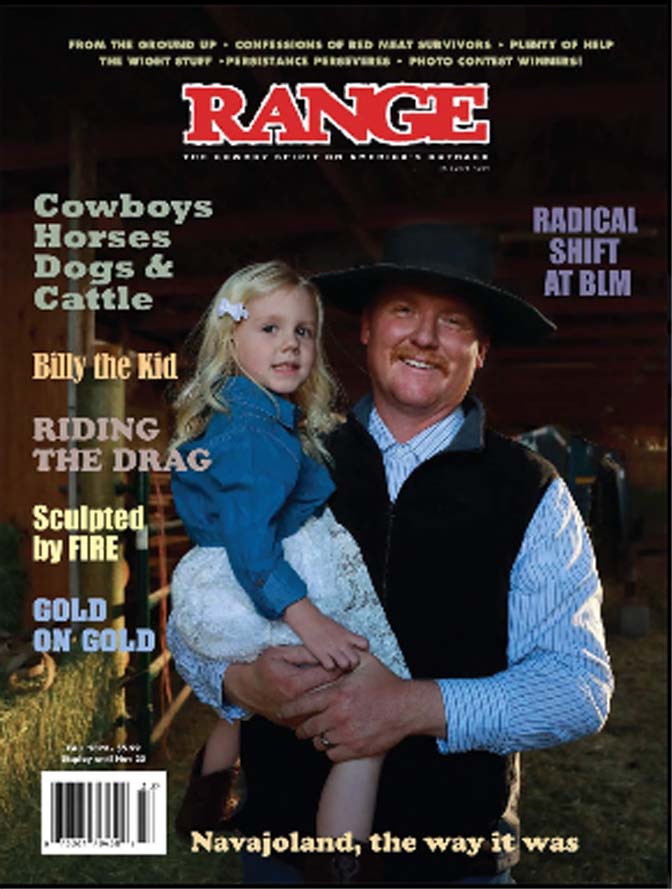
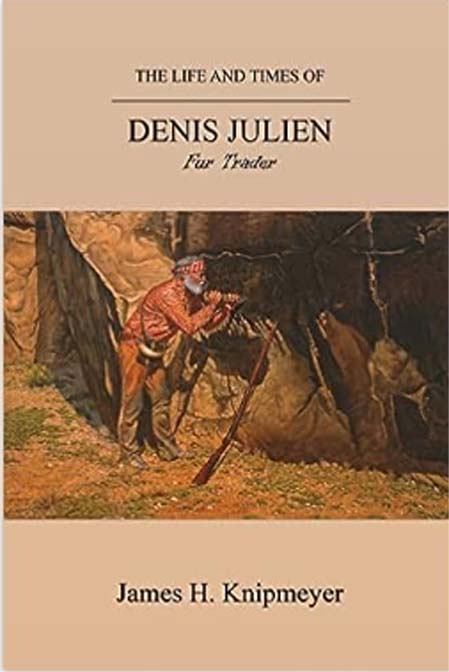
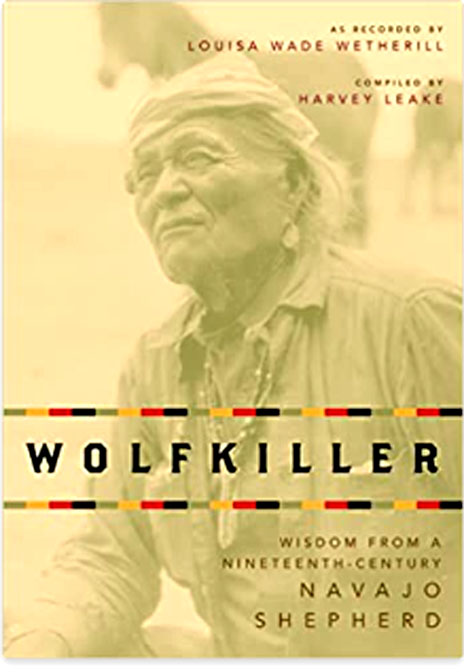
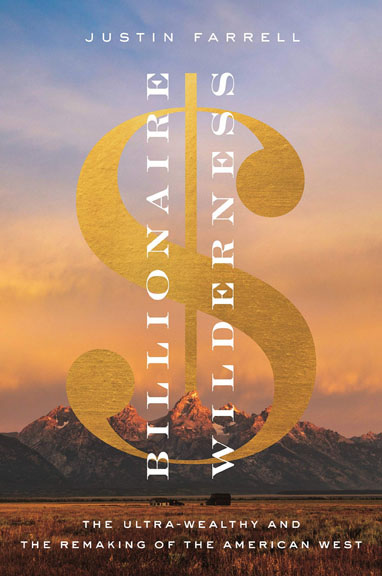
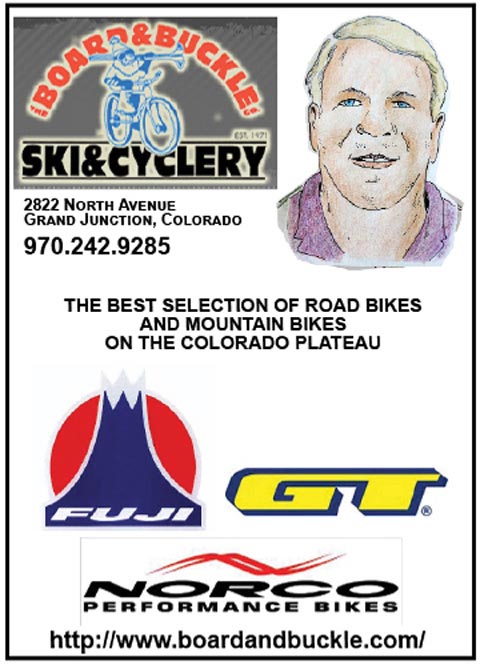
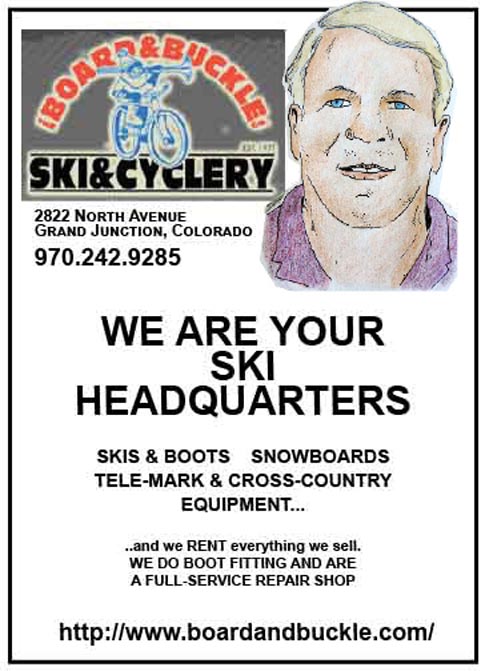
A really great tale about a special friendship! Friends Bill & Ellen Fiero and Gail and I did a few weeks car camping in Australia. We rode the Ghan RR and did alot of hiking. Spent a day with the Aborigines and came home with a digirido which we could not play. Aussies wearing shorts as we sported down jackets was commonplace! We didn’t have the luck you had to actually form such a wonderful friendship, even to staying there and helping with chores! We were all taken with the country and its people. Your experience over those years was terrific!
I was thinking about your reference to “chores,” and how lucky I was to be able to help. And that’s how I still feel about it. One of the aspects of physical labor that few acknowledge any more is the satisfaction that comes from completing those chores and doing them well.
Nothing I do, sitting on my butt typing, will ever compare to the water line job that Wringe and I completed, so that the Wringe-Quick tomatoes could get the moisture they needed.
And it was the dirtiest I’ve ever been in my life. I wish I’d taken a picture!
What a great story! So glad John completed the circle by making it to your wedding.
It’s sort of bittersweet to look back now. But on that day, “the world was spinning in greased grooves. “
During the late 1800s the big American ranchers embraced Herefords as their go-to breed for both hardiness and high production value. Although Texas longhorns were adopted early on by the big ranches, they were leaner and smaller than Herefords and so fell out of favor except where forage and water were most scarce. It appears that Herefords and other British mixed breeds are still favorites with Australian ranchers, which makes a lot of sense.
It’s clear that Australian cattlemen are a breed apart from American ranchers, but they seem to share the same sense of practicality and individualism that defines cowboys from all climes and ages. I can see why you developed such a fondness for John Wringe. If only we had a million more like him.
Thanks Jim good stuff. Great friends are so hard to find.